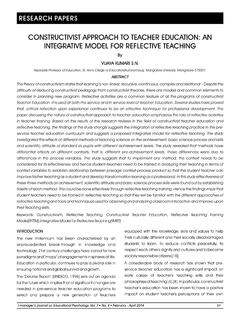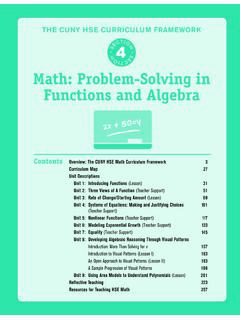Transcription of Problem Based Learning: A Student-Centered Approach
1 English Language Teaching; Vol. 12, No. 5; 2019 ISSN 1916-4742 E-ISSN 1916-4750 Published by Canadian Center of Science and Education 73 Problem Based Learning: A Student-Centered Approach Sheeba Sardar Ali1 1 Majma a University, KSA Correspondence: Sheeba Sardar Ali, Majma a University, KSA Received: February 24, 2019 Accepted: April 8, 2019 Online Published: April 11, 2019 doi: URL: Abstract Problem - Based learning is a teaching method in which students learn through the complex and open ended problems.
2 These problems are real world problems and are used to encourage students learning through principles and concept. PBL is both a teaching method and Approach to the curriculum. It can develop critical thinking skill, Problem solving abilities, communication skills and lifelong learning. The purpose of this study is to give the general idea of PBL in the context of language learning, as PBL has expanded in the areas of law, education, economics, business, social studies, and engineering. It encourages students to develop skills that can be useful for their future and in practical life within a team environment.
3 For the language classroom in Arab countries, where English is spoken as a foreign language PBL can be very useful. Trained teachers can design problems to meet the needs of the learners, that can be useful to improve English practically in social context. Keywords: Problem Based learning, curriculum, collaborative learning, team work, Approach , method 1. Introduction Problem Based learning is a Student-Centered educational method which aims to develop Problem - solving skills through a self- directed learning as a life time habit and team work skills.
4 Untidy, messy, ill structured situations are given to the students in which they take the role of owner of the situation. Students observe the Problem and learn about the solution, compared to traditional lecture Based learning, we have many advantages from PBL. Some of the advantages are as- makes learning useful to the real world, encouraging and motivating how to learn, engage students learning similar to real world. PBL not only focus on Problem solving but also responsible for the development of other skills and attribute.
5 As stated by Larson (2001), students in PBL classroom improve their social skills as they have more opportunities to practice using the language for authentic communication. PBL can be difficult to implement in a traditional classroom setting if students and teachers trouble understanding active or meaningful. PBL requires to students to engage in active learning strategies as a self -directed learning disposition. It represents a paradigm shift from teaching in a traditional way and learning philosophy.
6 Meaning of PBL PBL is a process that is used to identify problems with a scenario to increase the knowledge and understanding. Some of the principles are listed below. 1) Independent and self- directed learning 2) Learning happens in a group and teacher is a facilitator. 3) All groups have to participate equally. 4) Students learn about motivation, teamwork, Problem -solving and engagement with the task. 5) Materials such as Data, photographs, articles, can be used to solve the Problem . Problems have always mobilized and stimulated thinking and learning, when problems are experienced as relevant and important they energize our activity and focus our attention, people are motivated to redirect their energies towards solving them.
7 Although Problem - Based learning has appeared since the dawn of time, in higher in the 21st century teachers and in other professionals across the globe using PBL in various disciplines. Many teachers in higher education are now highly experienced in the design and use of problems and are comfortable with PBL methodologies that have been part of the higher education. PBL can be united into any learning situation. Critical thinking skills, Problem -solving abilities, and communication skills are the outcome English Language Teaching Vol.
8 12, No. 5; 2019 74 of PBL. It can enhance the ability of collaborative skills, finding and evaluation for life-long learning. 2. Traditional Versus Problem - Based Learning In traditional approaches to learning Based on traditional way, data is provided first in traditional way of learning, but in PBL problems are presented to the students to solve the Problem . Figure 1 represents the process of learning and showing how each step is inter-connected to each other. Figure 1. The process of learning (PBL) The challenges are heightened when teachers are unable to facilitate group discussions, construct valid problems, and guide students through the Problem solving process.
9 Similarly, students fail when they are unable to work well in groups, actively generate resolutions or ideas related to the Problem . Students may also fail in terms of critical analysis which is vital in PBL. Figure 2. Difference between traditional learning and PBL Sample Activities for Traditional Based Learning VS Problem - Based Learning in English Language Classroom Traditional Based learning Problem Based learning You are teaching a unit in your writing class on poetry. To evaluate your students understanding, you give a quiz on the various forms of poetry.
10 Present students with a similar theme and have them write a poem in a specific format or style; what form is most effective and why. You are teaching a unit in Syntax, sentence structure in English Language. To evaluate your students understanding give them short assignment to write examples for each. Ask students to present similar sentence structure in some other languages with examples. You are teaching a unit in Phonetics on sounds and letters. To evaluate your students understanding, give a quiz to ask examples for each sound and letters.















